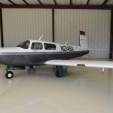Leaning mixture after start-up
-
Members Online
- Fritz1
- MDMooney
- 1980Mooney
- Bpvlbv
- drpovation
- eman1200
- Kelpro999
- BlueDun
- DCarlton
- TCC
- Ibra
- hammdo
- Yanyen
- M20S Driver
- rbmaze
- toto
- Jim F
- Jeff_S
- KSMooniac
- Sense
- alexz
- AshAsh
- Greg Ellis
- DXB
- Joe Linnebur
- rahill
- Jake@BevanAviation
- M20Jon
- 00-Negative
- kortopates
- SKI
- Mufflerbearing
- Rusty Pilot
- MarkL
- Boboli
- RoundTwo
- cliffy
- AH-1 Cobra Pilot
- CAV Ice
- hypertech
- N201MKTurbo
- LP1
- EricJ
- Ed de C.
- buddy
- Parker_Woodruff


Recommended Posts
Join the conversation
You can post now and register later. If you have an account, sign in now to post with your account.